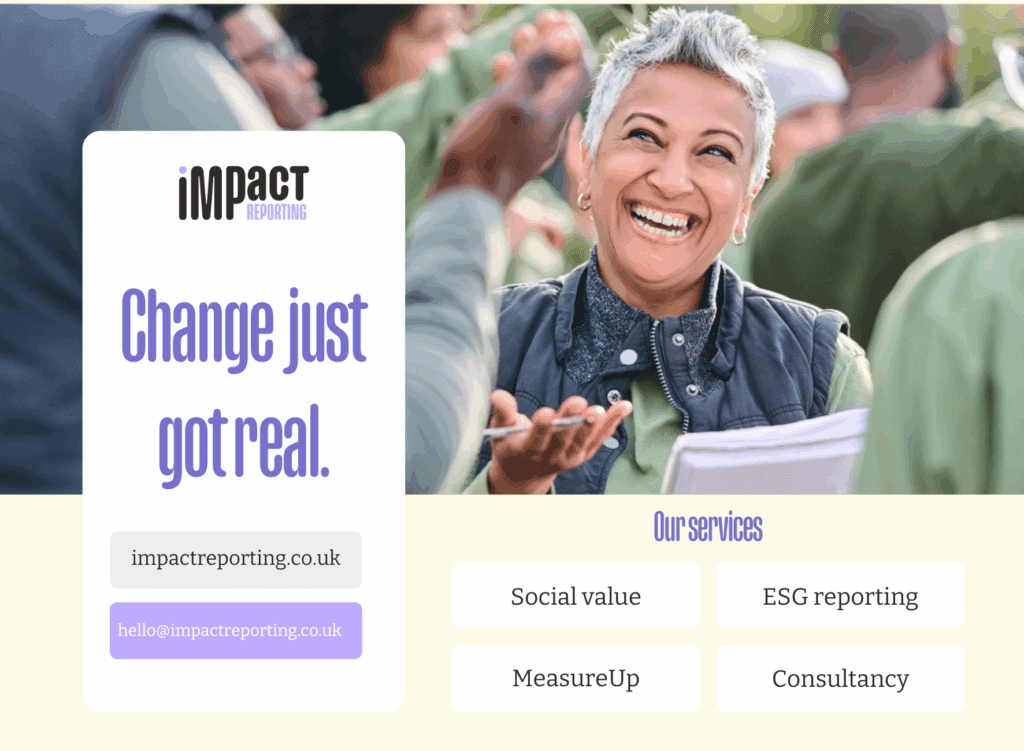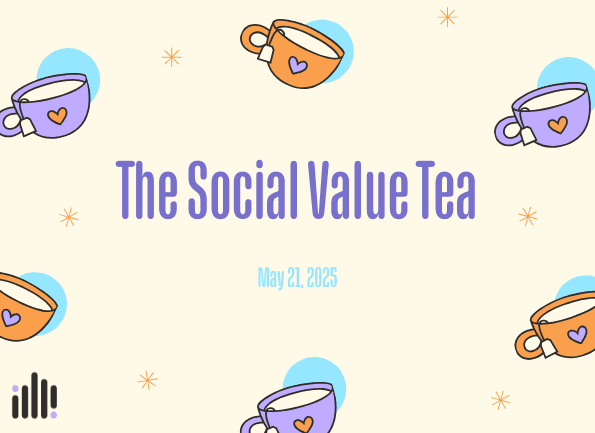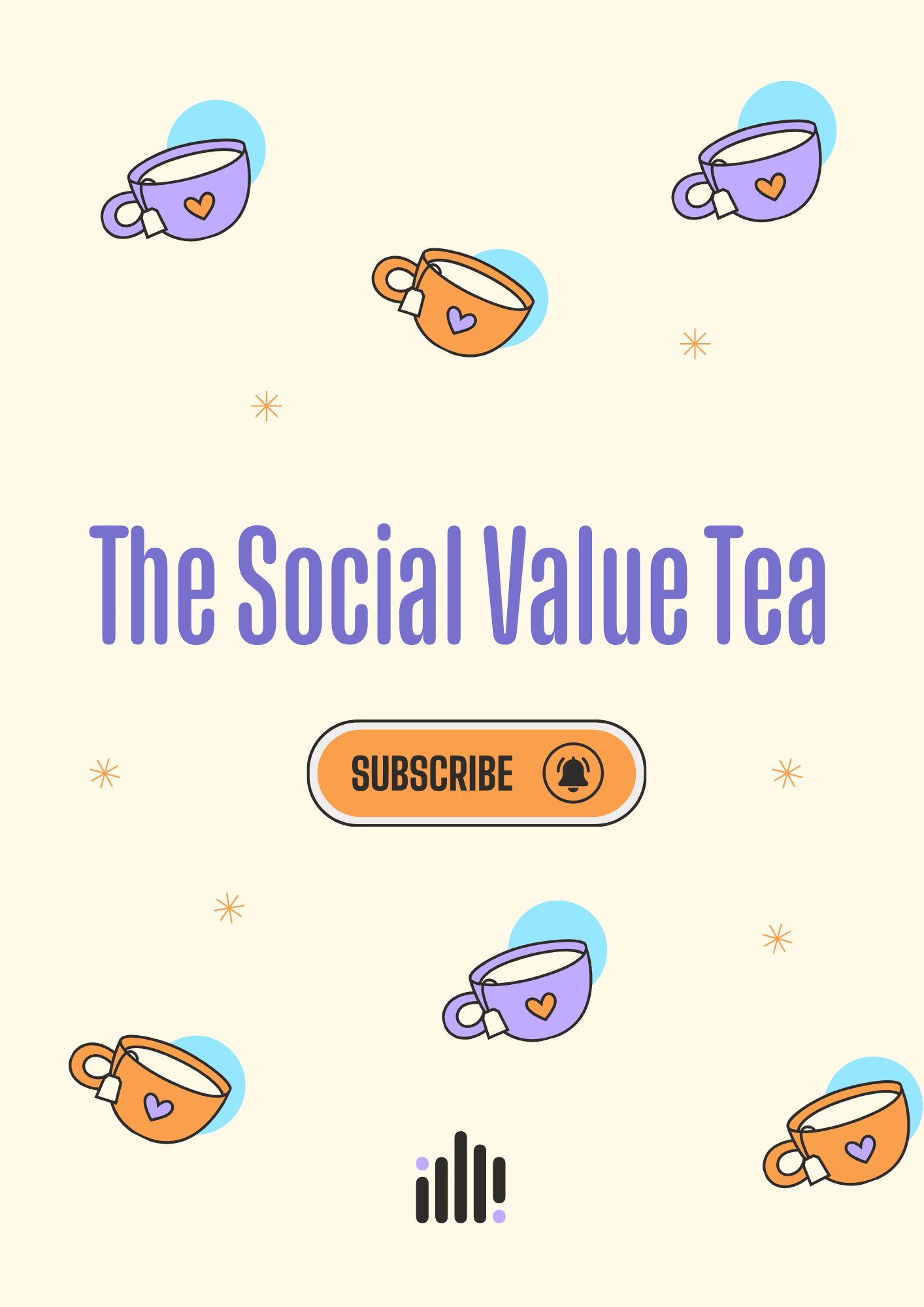PPN 002 and the New Social Value Model: What It Means for Social Value Managers and Public Procurement
From 1 October 2025, Procurement Policy Note (PPN) 002 becomes mandatory across central government procurements. This marks a structural reset in how social value is assessed, measured, and delivered. At stake is around £400bn of Central Gov contracting authority spend – and suppliers must now compete on social value as rigorously as on price or quality.
6 Key Changes under PPN 002: How the 2025 Social Value Model Reshapes Procurement
PPN 002 introduces a more disciplined and standardised framework for embedding social value into public procurement.
Below are the most significant updates that social value managers need to understand:
1. Mandatory weighting:
Apply a minimum 10% weighting to social value (or equivalent). Under Price per Quality Point (PQP), this equates to 10% of the quality score.
Weightings may be set higher where the market is mature or the opportunity for social value impact is significant. We already see some local authorities goin further, with weightings of 20-30% quite common.
This elevates social value from a “nice to have” to a decisive factor in competition – suppliers can no longer afford to treat it as secondary to quality or price.
2. Five national missions:
The new model aligns procurement with the Government’s five national missions: including fair work, green growth, health and wellbeing, opportunity, and community resilience. These missions anchor social value within broader policy priorities.
3. Standard Reporting Metrics (SRMs):
A curated set of Standard Reporting Metrics is designed to improve comparability and transparency across government contracts. SRMs discourage vague, high-level pledges by defining what “good” looks like and providing clear indicators of what will score well. They also make it easier to track impact consistently across departments and suppliers.
4. Contractual integration:
Social value commitments are no longer limited to the bid stage – they must be written into contractual KPIs and tracked throughout delivery. This ensures accountability and continuous monitoring of social value performance.
5. Scope and timing: PPN 002 applies to central government departments, executive agencies, and non-departmental public bodies (NDPBs). The transition period began 24 February 2025, with full implementation from 1 October 2025. (note: Existing contracts are unaffected; if awarded under PPN 06/20, they remain bound by their original terms.)
6. Assessment approach: And lastly, one of the most significant practical changes is that bids will no longer be scored on numerical commitments at tender stage. Evaluation focuses exclusively on the written response – how suppliers explain their approach, rationale, delivery plan, and evidence of outcomes. In addition, the Cabinet recommends: “except in government’s most important contracts, users are encouraged to focus and select one outcome from the model (e.g. Fair Work and its associated MACs and sub-criteria), to focus and streamline the process for suppliers.”
For social value managers, this means two things:
1️⃣ Understanding whether your contracts are directly affected.
2️⃣ Preparing your data and frameworks for a wider shift in how commissioners expect value to be demonstrated.
Why Does PPN 002 Matter for Social Value and Public Procurement?
It’s a big ‘point’ in the social value calendar but it does not change the game for everyone. It IS of direct importance only to those contracting and bidding for central government contracts. For the rest of us, it indicates a direction of travel for bidding for, and winning government work – that the 5 missions are important – so get to know them! The guiding document should be the National Procurement Policy Statement as this IS applicable to ALL public sector procurement (covered under the Procurement Act) not just central government.
Background: Why PPN 002 Replaces PPN 06/20 and Aligns with the NPPS
PPN 002 builds on the earlier PPN 06/20 Social Value Model, aligning procurement more closely to the Government’s updated National Procurement Policy Statement (NPPS). The intention is to use public spending power strategically to advance social, environmental, and economic priorities.
While the legal obligation applies directly to central government departments, executive agencies, and non-departmental public bodies, its influence will extend across the public sector. Local authorities and other contracting authorities may voluntarily adopt it to ensure comparability and credibility.
The transition window runs from 24 February to 1 October 2025, during which contracting authorities can choose between the old and new models. After 1 October, PPN 002 becomes mandatory for all in-scope procurements going forwards (but this WILL NOT affect contracts that are already in place under the old model).
PPN 002 Explained: What’s Changing in the 2025 Social Value Model?
The reforms introduced through PPN 002 create a more disciplined, standardised, and enforceable framework for embedding social value into public procurement. Below, we break down the five most significant changes:
1. Mandatory weighting of at least 10%
- What it means: Every in-scope central government procurement must allocate a minimum 10% of the total evaluation score to social value.
- Why it matters: Previously, social value weighting varied considerably and was sometimes treated as optional or marginal. Now, it is a guaranteed, material part of every contract assessment.
- Practical implication: Social value can be a decisive factor in competition. Commissioners are already going further, setting 20–30% weightings in some local procurements. This means suppliers cannot afford to treat social value as a secondary consideration; it is as strategically important as quality or price.
2. From themes to missions
- What it means: PPN 002 replaces the broader “themes” of PPN 06/20 with five national missions (these are the new Labour Government’s 5 missions) and eight defined policy outcomes.
- Why it matters: The missions are directly connected to government priorities: fair work, clean energy, public health, community resilience, and they define the evaluative lens through which social value will be judged.
- Practical implication: Suppliers must demonstrate how their commitments align to one selected mission and outcome, using specific, measurable, time-bound deliverables. Importantly, while bidders may include numerical commitments (i.e. stating “we will deliver X number”) may be required or invited, but those numbers do not itself confer scoring at bid evaluation – evaluation is based on the quality of the written method / narrative / explanation against the award criteria and subcriteria. Tenders should ideally use one outcome, to reduce complexity and focus the supplier response. Generic checklists or boilerplate responses will score poorly, while tailored, well-substantiated contributions will be favoured.
The Guide explicitly says:
“Although users will ask the supplier to state the quantity of what they commit to deliver (and include the resultant offer as a commitment in the contract), the assessment is qualitative, scoring how the method statement and implementation plan meet the award criteria and sub-criteria (only) – volumes are not evaluated.” GOV.UK
3. Introduction of Standard Reporting Metrics (SRMs)
- What it means: PPN 002 provides a curated set of standard reporting metrics, mapped to the missions and model award criteria.
- Why it matters: In the past, suppliers defined their own measures, leading to inconsistency and making comparison difficult. SRMs enforce comparability, transparency, and credibility.
- Practical implication: Each outcome includes Standard Reporting Metrics (SRMs). Use the relevant SRM wording where it fits; agree proportionate bespoke metrics only where no SRM applies-but they must be robust, auditable, and proportionate. This requires suppliers to strengthen their data collection and reporting systems and ensures consistent and comparable reporting while maintaining flexibility where innovation or local adaptation is needed.
4. Contractual integration
- What it means: Social value is no longer just part of the bid evaluation. Commitments made in tenders must flow into contract schedules and KPIs, monitored throughout delivery.
- Why it matters: This raises the accountability bar. Promises made at bid stage become binding deliverables, with performance tracked and, in some cases, scored.
- Practical implication: Social value managers must coordinate closely with operations teams to ensure commitments are realistic, deliverable, and embedded in contract management. Failure to deliver risks reputational harm, KPI penalties, and weaker positions in future competitions.
5. Scope and timing of implementation
- What it means: PPN 002 applies to central government departments, executive agencies, and non-departmental public bodies. It replaces PPN 06/20 in full from 1 October 2025, after a transition period beginning 24 February 2025.
- Why it matters: While mandatory only for central government, many local authorities and NHS bodies are expected to adopt or adapt PPN 002 for alignment and comparability.
- Practical implication: Suppliers need to prepare for uneven adoption in the short term (some authorities will use PPN 002 immediately, others later). A flexible, framework-agnostic approach is therefore essential.
Understanding the missions under PPN 002 (and how they map to outcomes)
It’s important to distinguish between the Labour Government’s “Five Missions” (the strategic goals shaping national policy to “rebuild Britain”) and the Social Value Model’s “Five Social Value Missions” (the framework used in procurement). While the former set the political direction, the latter are the operational mechanism used by contracting authorities.
The Labour Government’s five missions to “rebuild Britain” are:
- Opportunities – increasing employment, skills, and training pathways.
- Fair Work – ensuring equitable pay, diversity, inclusion, and workforce conditions.
- Wellbeing – improving health and resilience, reducing inequalities.
- Environment – decarbonisation, biodiversity, and sustainable practices.
- Community and Place – strengthening local economies, civic life, and resilience.
Under PPN 002, the Social Value Model aligns to the “Our Plan for Change” . Each mission groups the policy outcomes that commissioners will include in tenders. Suppliers respond to one selected outcome per tender, with qualitative assessment against model award criteria.
Government’s Five Key Missions in Public Procurement (policy direction)
- Kickstart economic growth – good jobs, productivity and opportunity across the UK.
- Make Britain a clean energy superpower – accelerate net zero and lower energy costs.
- Take back our streets – reduce serious violence and strengthen community safety.
- Break down barriers to opportunity – improve access to work, skills and progression.
- Build an NHS fit for the future – improve health outcomes and wellbeing.
How the Social Value Model maps to those missions (operational assessment)
Mission: Kickstart economic growth
• Outcome 1 – Fair work (jobs, fair conditions, pay practices, in-work progression, modern slavery risk).
• Outcome 2 – Skills for growth (address sector skills gaps, apprenticeships/training).
• Outcome 3 – Resilient, innovative and flexible supply chains (SMEs/VCSEs participation; community and anchor-institution co-design).
Mission: Make Britain a clean energy superpower
• Outcome 4 – Sustainable procurement practices (additional environmental benefits in delivery; influencing staff/suppliers/communities to support climate and nature).
Mission: Take back our streets
• Outcome 5 – Support the reduction in crime (e.g., domestic abuse awareness/safeguarding within contract delivery).
Mission: Break down barriers to opportunity
• Outcome 6 – Employment and training for those facing barriers (e.g., disabled people, NEETs, care/prison leavers).
• Outcome 7 – Create a pipeline of opportunities for the future workforce (pre-work training, placements, outreach).
Mission: Build an NHS fit for the future
• Outcome 8 – Increase productivity through physical and mental wellbeing (workforce health and wellbeing actions; links to reducing health inequalities).
Note: The Model provides the model question, award criteria and sub-criteria for each outcome; evaluation is qualitative against these criteria (volumes/quantities inform contracts and reporting, not bid scoring).
5 Common Pitfalls When Implementing the PPN 002 Social Value Model
1. Submitting generic, non-localised responses
If your bid could be copied and pasted anywhere in the country, it’s not good enough. Failing to tie your pledges to the specific geography or community affects credibility. Commissioners will expect you to show how your commitments relate to the place the contract operates – not just a national policy statement. Even for national suppliers, that means naming the local partners, workforce, or communities who will actually benefit. This is now an explicit expectation under the Social Value Model and the Social Value Act.
2. Confusing corporate policy with contract-specific delivery
Many suppliers still paste in their corporate ESG policy or HR commitments and think that’s social value. It isn’t. PPN 002 asks a different question: what will this contract deliver for this community, over this timeframe? The tender needs to show how your corporate policy operates in that place. A Living Wage policy is great – but you’ll need to show how it plays out within the workforce delivering this specific contract.
3. Promising activities without explicit local baselines, cohorts, or measurement mechanisms
Making activity statements (e.g. “we’ll run training across the UK”) without specifying which local cohorts, baseline numbers, or local measurement data invites weak scoring. The Model wants you to show what difference those activities make – to employment, wellbeing, carbon reduction, or community resilience. It’s the shift from counting what you do to proving what changes because of it. Especially in Outcomes 1, 6, and 7, bidders must include a baseline number of roles in the local area when applicable.
4. Overlooking strategic local partnerships (SMEs, VCSEs, micro-organisations)
The guidance emphasises considering barriers to participation for SMEs, VCSEs, and local organisations. Ignoring these relationships not only weakens your delivery model but also misses the Model’s expectation of local integration and inclusion. So if you’re not partnering locally, you’re missing both marks: policy alignment and practical capability.
5. Neglecting engagement and consultation with communities
Too many teams write social value statements in a vacuum – without talking to the delivery team, supply chain, or local community.
That’s how you end up with bids that sound impressive but are impossible to deliver.
PPN 002 reinforces the importance of engagement: listen early, consult properly, and shape your commitments around what’s really needed in that place, not what looks shiny in a PowerPoint deck. If you skip or superficially treat consultation, your response risks being seen as generic or misaligned to the “relevant area.”
“I think ‘the biggest risk with PPN 002 is organisations blindly following the metrics in the model without starting from what they are actually delivering, and developing their social value offer and bid responses from that perspective. Numbers without grounding in reality, or a delivery plan will not do, and undermine the lever effect that we are supposed to see through social value in public sector procurement.” – Catherine Manning, Head of Impact Practice at Impact Reporting
Strategic implications for social value managers
PPN 002 is a big moment for social value – but it doesn’t rewrite the rules for everyone. It applies directly to central government, yet it clearly signals where the rest of public procurement is heading. The message is simple: mission-led, evidence-backed social value is becoming the new standard.
So, whether you’re bidding into central government or not, the direction of travel is clear. Here’s what social value managers should focus on next:
- Treat social value as a strategic differentiator in competitive procurement.
- Embed it across the organisational delivery, not just in response to one bid.
- Demonstrate outcomes, not just activities, with evidence of real-world impact.
- Build robust measurement systems aligned with SRMs and contract KPIs.
- Navigate multiple frameworks with confidence, as local authorities may still adopt or reference alternatives alongside PPN 002.
A Tactical Roadmap for Bids under PPN 002
Winning under PPN 002 isn’t about who promises the most – it’s about who plans the best. The strongest bids will show discipline, traceability and realism from start to finish.
Think of this as moving from good intentions to delivery confidence: knowing how to turn your social value commitments into actions, KPIs, and measurable impact.
Here’s a practical roadmap to help you do just that:
| Phase | Key Actions | Notes / Best Practices |
| Pre-tender / Market Engagement | Engage early to identify priority missions/outcomes. | Influence refinements to model questions through consultation. |
| Framework Mapping | Map your existing frameworks against PPN 002 missions, MACs, and SRMs. | Avoid duplication; build once, report many. |
| Bid Drafting | Structure method statements around the model question, with clear metrics, cohorts, delivery plan, and governance. | Use SRM language where possible. |
| KPI & Contract Integration | Ensure commitments can flow directly into contract schedules and KPIs. | Maintain traceability from bid → KPI → reporting. |
| Delivery & Monitoring | Set up dashboards, reporting cadences, and audit logs. | Be ready for commissioner scrutiny throughout contract life. |
Case Example: Facilities Management under PPN 002
Let’s imagine you’re supplier bidding for a facilities management contract with a large government department.
Pre-PPN 002 response: “We will employ apprentices and run community volunteering initiatives.”
It sounds fine at first glance, but under PPN 002, it’s too generic. Activities listed but not tied to outcomes, no metrics, no delivery plan and little connection to the local community.
PPN 002-compliant response: Now, here’s how the same idea might look when it’s aligned with the new model:
- Mission alignment: The proposal links to the “Opportunities” mission – focusing on skills, training, and employment.
- Specific commitment: “We’ll create 15 apprenticeships for local 18–24-year-olds, prioritising those not in education, employment or training (NEET).”
- Measurement: Apprenticeships will be tracked using the Standard Reporting Metrics (SRMs) – covering total hours, progression, and completion rates.
- Partnership: Delivery will be through a local college and a VCSE partner already trusted by the community, ensuring both reach and credibility.
- Outcome focus: The bid explains why it matters – showing how the apprenticeships will lead to sustained employment, reduced local unemployment and growth in green skills within facilities management.
- Contractual integration: The commitments are written into the KPI schedule, reported quarterly, and independently verified through partner data.
This second response does more than tick boxes. It tells a story of value – one that’s credible, locally relevant, and verifiable. It’s evidence-led, aligned with PPN 002’s structure, and it shows commissioners that the supplier understands both the policy intent and the practical delivery of social value.
In short: it’s the difference between saying “we’ll do good things” and showing “here’s exactly how this contract will make a measurable difference.”
How Impact Reporting Helps Organisations Comply with PPN 002
PPN 002 raises the bar – but it doesn’t have to raise your risk. Impact Reporting is built for exactly this moment: a world where frameworks evolve, metrics standardise, and delivery must be evidenced contract by contract.
Here’s how we help social value managers and bid teams turn compliance into competitive advantage:
- Framework-agnostic flexibility: Whether you’re aligning to PPN 002, MeasureUp, or a bespoke model, we help you map once and report across all. No duplication, no lock-in. Just one source of truth.
- SRM-ready reporting: Our platform can embed the Standard Reporting Metrics so your commitments and data flow seamlessly into government requirements.
- Contractual integration: Translate bid promises into deliverables, KPIs, and ongoing reporting dashboards – making you audit-ready from day one.
- Outcome-driven storytelling: Go beyond activity counts. Capture and communicate the real impact – improved wellbeing, greener practices, stronger communities – with the evidence commissioners want to see.
- Future-proof assurance: As procurement policy evolves, we update mappings, metric libraries, and frameworks so you can adapt without disruption.
Final Thoughts
PPN 002 signals a maturation in social value policy: from aspirational add-ons to measurable, enforceable outcomes. For social value managers, this is the welcome moment to shift from compliance to strategy.
Suppliers who approach PPN 002 with authentic, data-backed, outcome-driven commitments will not only stay compliant but win more bids. Those who treat it as another form to fill in will fall behind.
With PPN 002, the winners will be the organisations that can prove it – not just promise it. Impact Reporting gives you the clarity, data, and confidence to do exactly that.
👉 Book a discovery call or strategy session with our team to see how we can help you prepare your social value commitments, evidence, and reporting for PPN 002 – and whatever comes next.

Appendix: Key References and Further Reading
- Cabinet Office. Procurement Policy Note (PPN) 002: Taking account of social value in the award of contracts. (2025).
- Cabinet Office. The Social Value Model (HTML): missions, outcomes, model award criteria, sub-criteria, and SRMs. (2025).
- Cabinet Office. Guide to using the PPN002 Social Value Model. (Feb 2025).
- National Procurement Policy Statement (NPPS). (2024).
📌 Citation note: The Cabinet Office remains the authoritative source. This blog is Impact Reporting’s interpretation to support practitioners in operationalising PPN 002.






